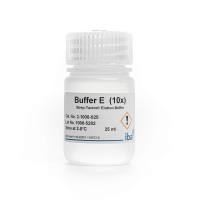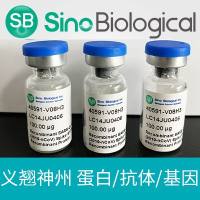Rapid elution of DNA from agarose gels
互联网
Rapid elution of DNA from agarose gels
James Movius, Hahn Lab
Last modified Sun, Nov 1, 1998
A method of quickly purifying agarose gel DNA fragments for use in subsequent reactions such as further restriction enzyme modification, T4 ligase, Taq polymerase, Klenow, or polynucleotide kinase. Although higher yields of purified DNA can be obtained from commercially available purification kits, greater ligation efficiencies per given amount of DNA have been seen with the use of these described spin columns.
Materials
650 microliter Eppendorf tubes
1.7 ml Eppendorf tubes
Sterile silanized glass wool
Hypodermic needle and syringe
Glass wool spin column preparation
1. Using a clean hypodermic needle, drive a hole in the end of a 650 microliter Eppendorf tube from the inside then cut off the cap.
2. Wearing gloves, pull off a small piece of glass wool and roll it into a ball between hands. Place the glass wool plug in the bottom of the 650 microliter tube. You may need to use a 1ml pipet tip to pack the glass wool in the bottom of the tube. Do not cut the glass wool, as this may produce small glass fibers that can pass through the hole in the small tube.
3. Place the tube with the glass wool in a 1.7ml Eppendorf tube. This completed spin column is now ready for use.
Eluting DNA from agarose gel fragments
1. Visualize ethidium bromide stained agarose gel with a transilluminator on low setting. Working quickly to minimize UV exposure to the DNA, excise the fragment of interest with a clean razor blade. After removing excess liquid with a Kimwipe, place the agarose fragment in the spin column.
2. Centrifuge the tube at 2874 xg for no more than 45 seconds to elute the DNA. Spinning longer coelutes substances that are inhibitory to further enzymatic reactions. 2874 xg corresponds to 5500rpm for Eppendorf centrifuge model 5415; 5000rpm for model 5417.
3. Using a transilluminator, check eluent in bottom of outer tube for the presence of ethidium bromide stained DNA.
4. The eluted DNA can now be used directly in enzymatic reactions. For ligations, no more than 40% of the total reaction volume should be eluted DNA, as this reduces ligation efficiencies.
5. The DNA fragments can be further purified by ethanol precipitation. The addition of 2-4 micrograms of carrier tRNA prior to precipitation can increase yield, and its presence in ligation reactions is non-inhibitory.









